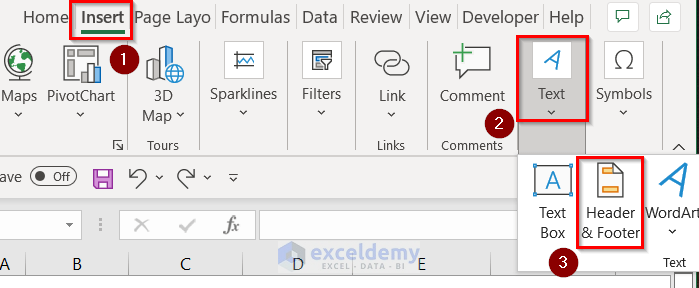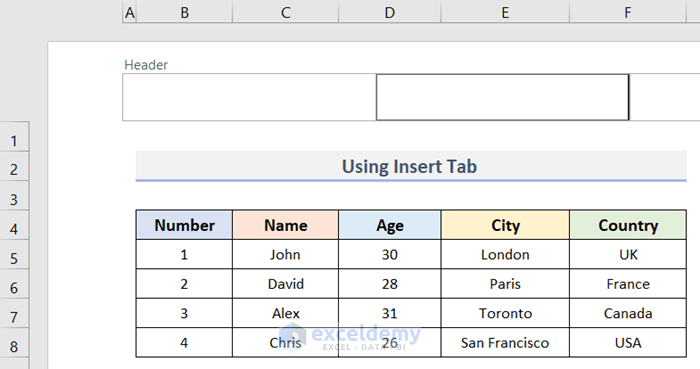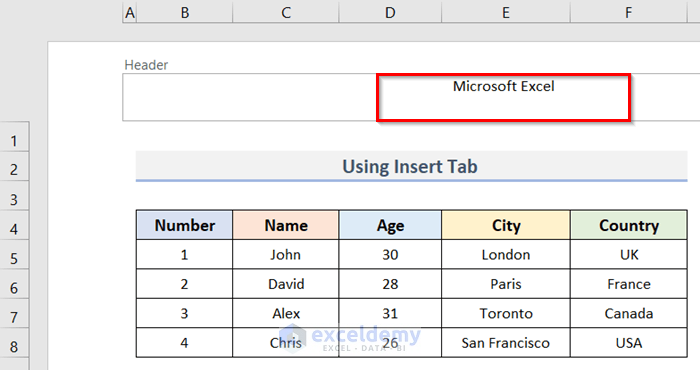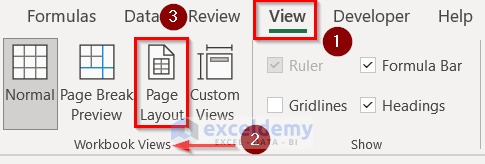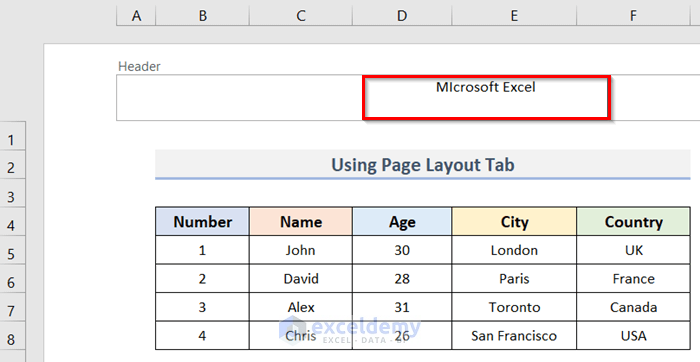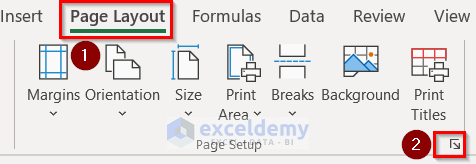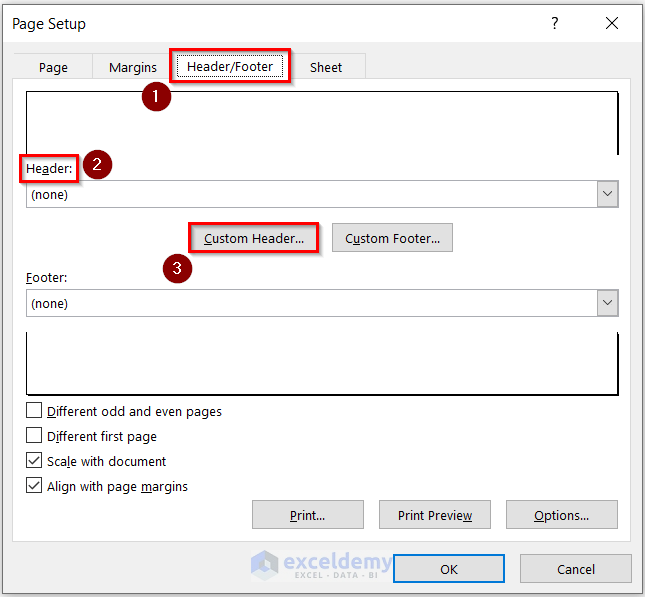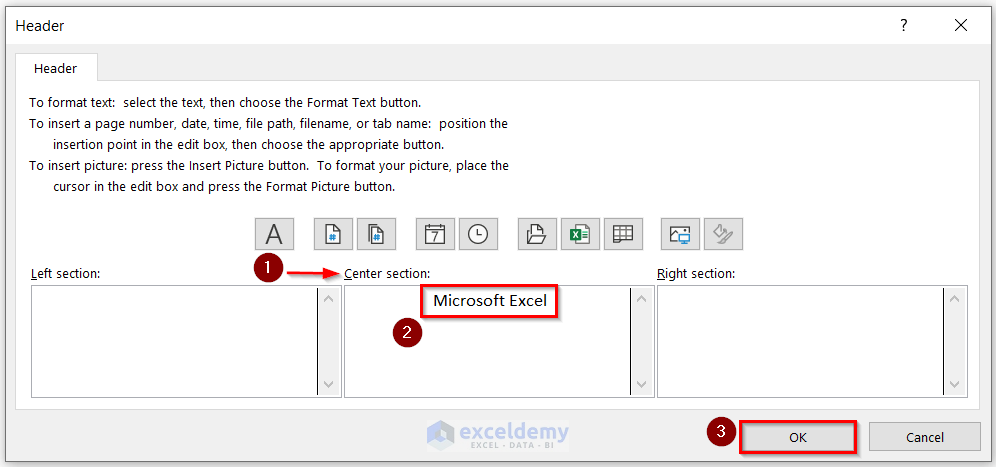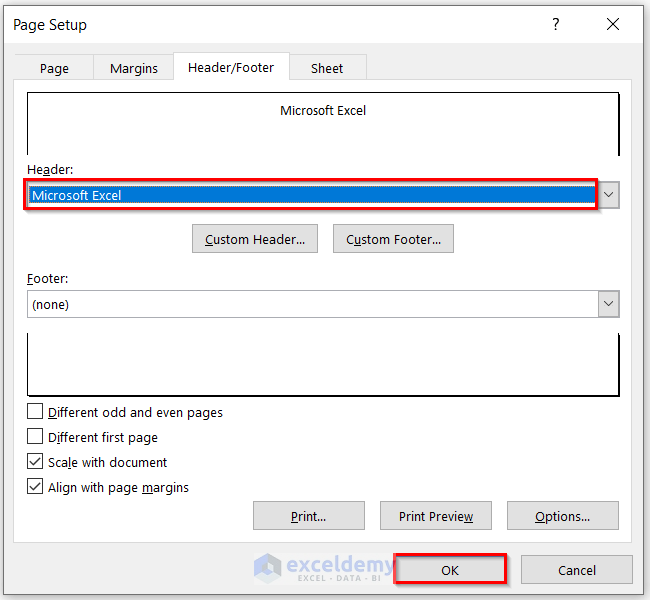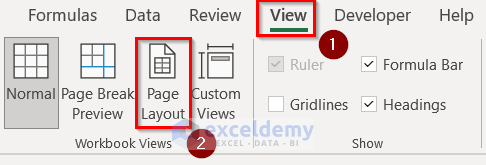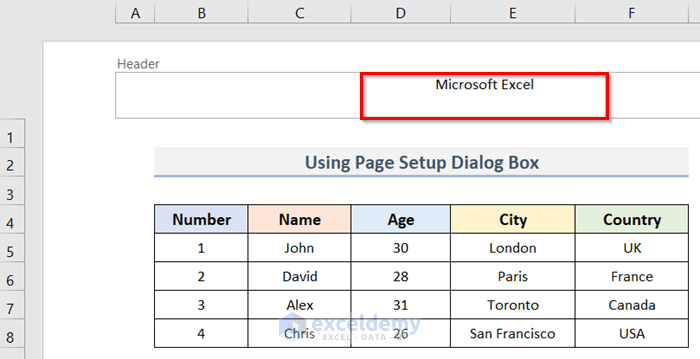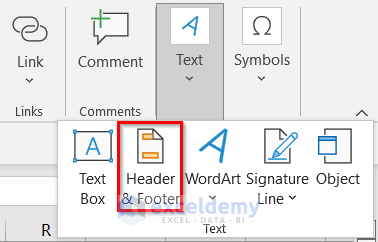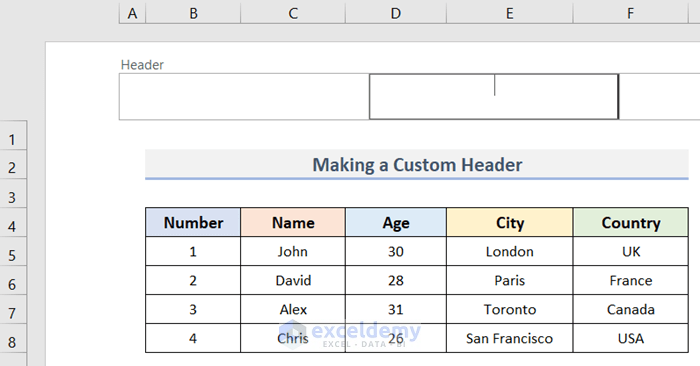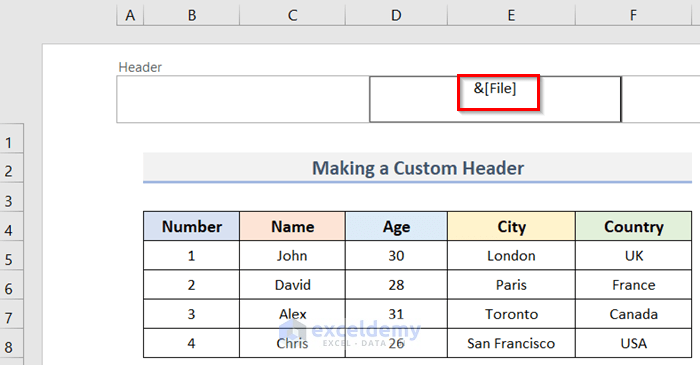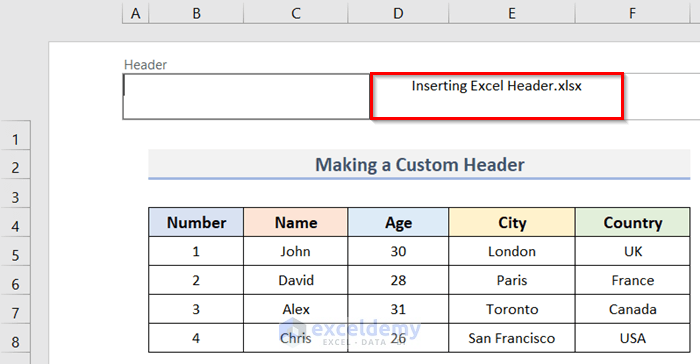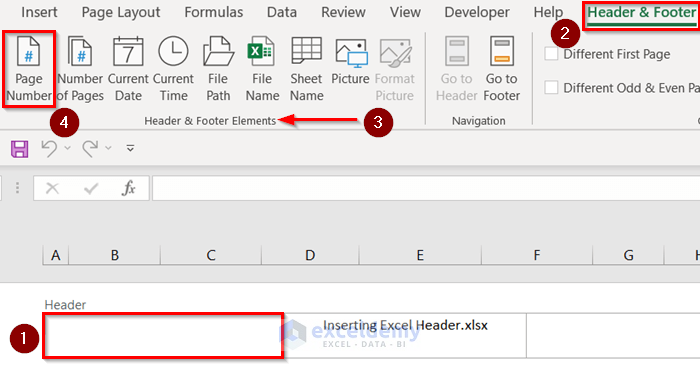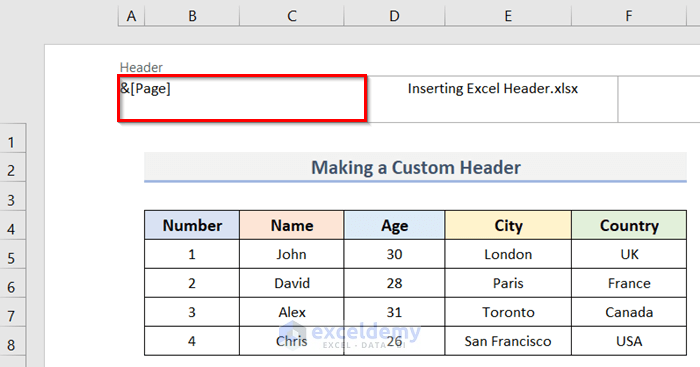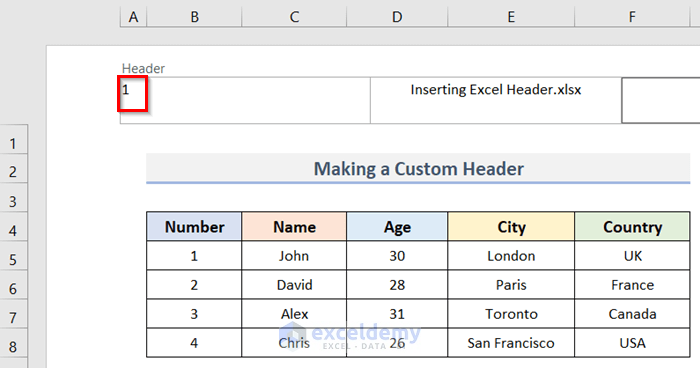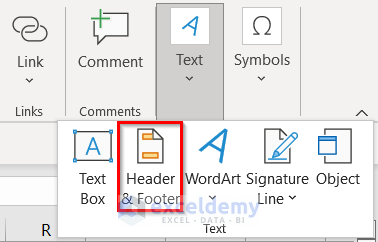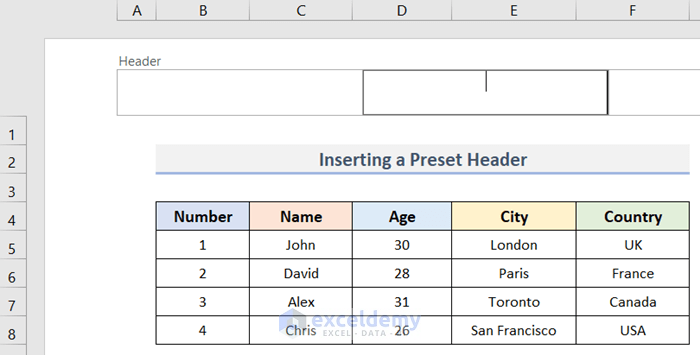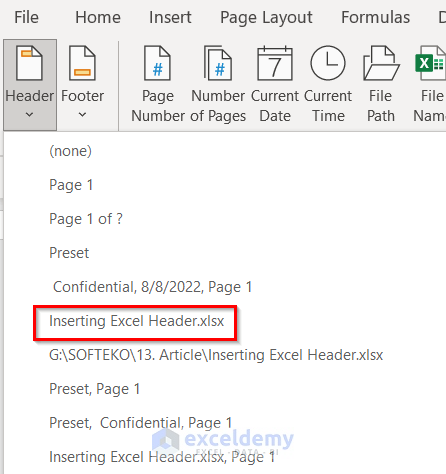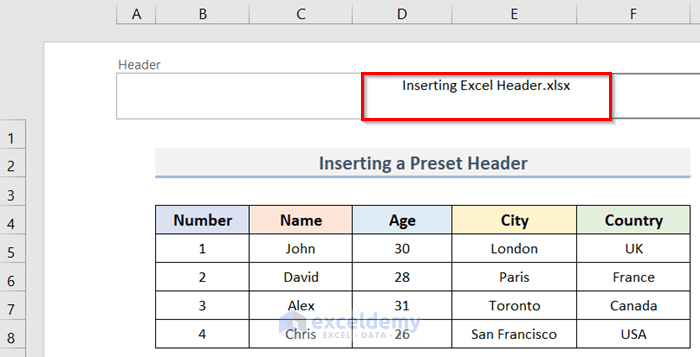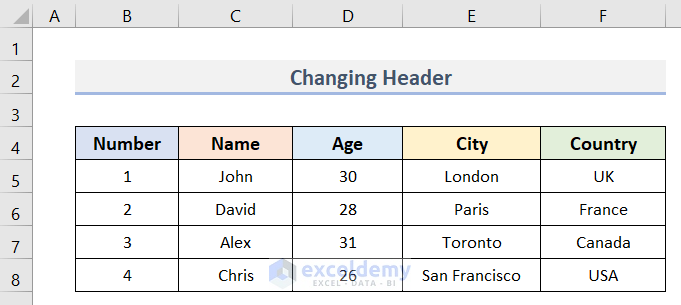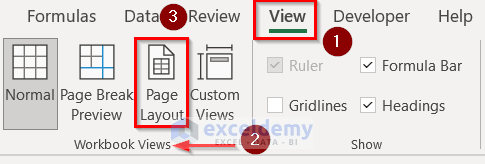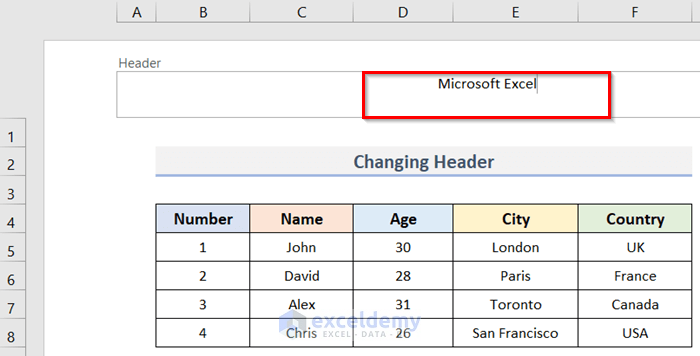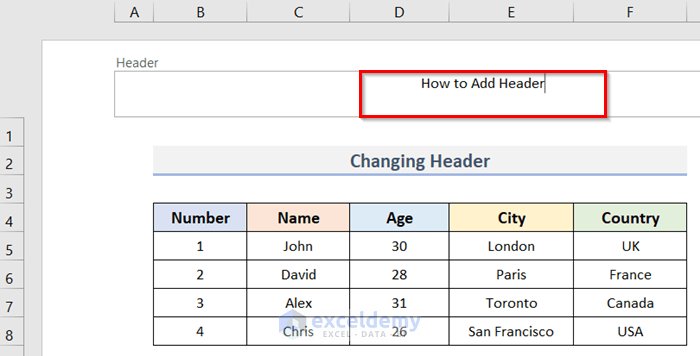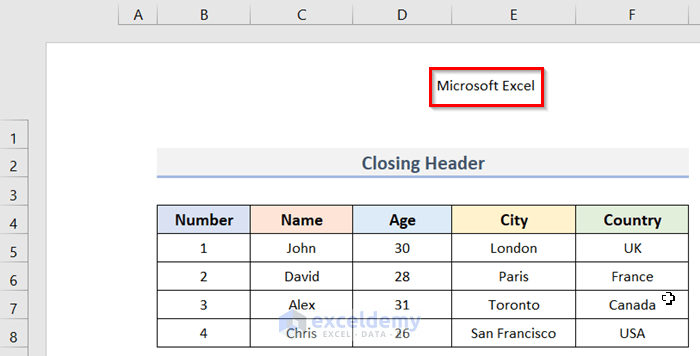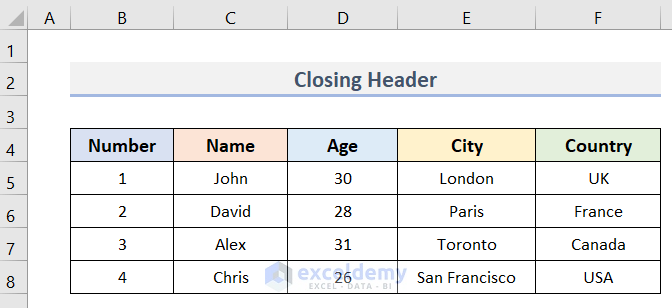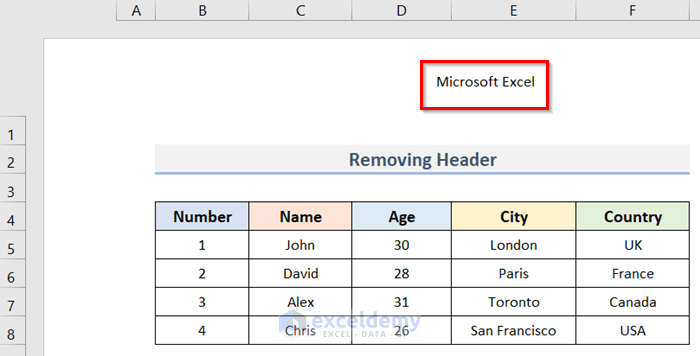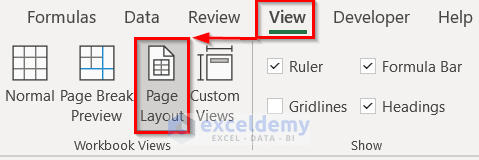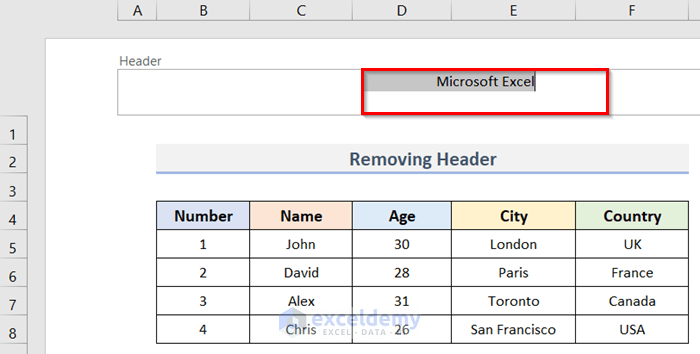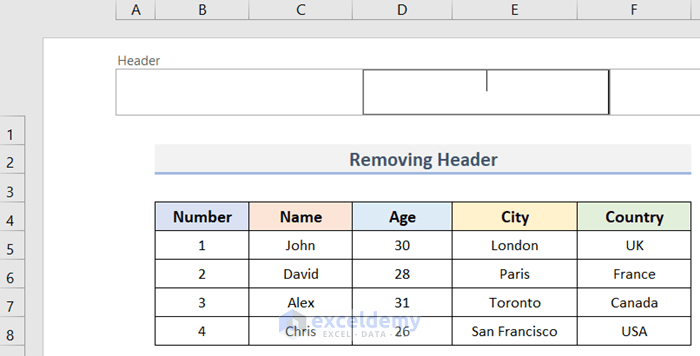We can insert header on each page of our Excel worksheet to make it more classy and professional. Headers typically contain some fundamental information about the spreadsheet, for example, page number, date, name of the workbook, and so on. In this article, we are going to discuss some methods with explanations to add header in Excel.
How to Add Header in Excel: 5 Quick Methods
Suppose, we have a dataset (B4:F8) in an Excel worksheet that contains the Numbers, Names, Ages, Cities, and Countries of some students. Here, we need to add a header to the worksheet. This article will guide us to insert a header using 5 quick methods. So without further delay, let’s get started.
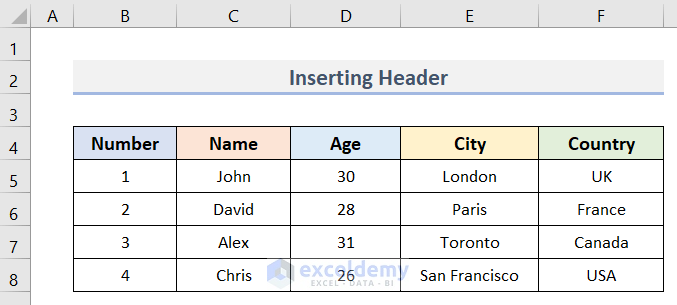
1. Use Insert Tab to Add Header in Excel
We can easily add a header to an Excel worksheet by using the Insert tab that is available in the Excel ribbon. The steps to do so are below.
Steps:
- First, go to the Insert tab.
- Secondly, select the Text option.
- Thirdly, select Header & Footer from the Text group.
- Now, the worksheet will switch to the Page Layout view and 3 sections for inserting the Header will be visible. Usually, the cursor remains in the middlebox.
- At this time, we can type header text in any of the Header sections. For example, we have typed ‘Microsoft Excel’ in the middle section.
Read More: How to Add Same Header to All Sheets in Excel
2. Create Header with Excel Page Layout Tab
We can also create headers in Excel by using the Page Layout tab. For this, we need to follow some simple steps. The steps are below.
Steps:
- Firstly, we need to go to the View tab.
- Then, go to Workbook Views and click on Page Layout.
- In turn, the Header section will appear.
- Finally, just like the previous method, we can type our desired header in the sections.
3. Apply Page Setup Dialog Box to Insert Header in Excel
If we need to add a header to a single worksheet or more than one worksheet at once, we can use the Page Setup dialog box. We can also customize and edit our header by using it. The steps to insert a header by using the Page Setup dialog box are below.
Steps:
- In the first place, go to the Page Layout tab in the Page Setup group.
- Subsequently, click the Page Setup Dialog Box Launcher.
- Therefore, a Page Setup dialog box will pop up.
- Now, select the Header/Footer tab from the dialog box.
- Next, go to Header and click on Custom Header to customize the header.
- However, we can also insert a built-in header from the Header dropdown menu.
- After clicking the Custom Header option, a Header dialog box will appear.
- Currently, we can type our header in the Left section, Center section, or Right section wherever we want.
- In our case, we have typed the header in the Center section.
- After that, click OK.
- Then, the header that we just typed, is visible in the Header box of the Page Setup dialog box.
- Eventually, click the OK button.
- In order to show the header in the worksheet, firstly, we have to go to the View tab.
- Secondly, click the Page Layout in the Workbook Views group.
- Hence, the worksheet will turn into a Page Layout view and the Header will be visible at the top of the page.
4. Make a Custom Header in Excel
Not only can we add the predefined headers to Excel worksheets, but we can also create our own with custom text images and files. This method will demonstrate how to make a custom header that includes page numbers and file names. Moreover, we can add the company logo, current date, and so on. The steps to make a custom header are below.
Steps:
- To begin with, go to Insert > Text.
- Next, select Header & Footer in the Text group.
- Now, the Header sections will open up on top of the page as the page will switch to the Page Layout view.
- If we want to insert this Excel file name as a header then at first, we need to select the specific Header section where we want to keep the file.
- For example, we have selected the Center Section.
- Then, go to the Header & Footer tab.
- After that, select File Name from Header & Footer Elements.
- Thus, we can add the Excel file name as a header in our worksheet.
- Therefore, to see the file name that we just added, click on any other place outside the Header box.
- Just like inserting a file name, we can also add a page number as a header in our Excel worksheet.
- To do so follow the steps below:
Select a Header section > Header & Footer tab > Header & Footer Elements group > Page Number.
- In this way, we can add a page number in our Excel worksheet.
- Eventually, to see the page number, click outside the selected cell.
5. Excel Preset Header Adding
Excel includes a number of pre-built headers that can be added to our file very quickly. The steps are below:
Steps:
- First, go to Insert and select the Text option.
- Then, select Header & Footer from the Text dropdown menu.
- As a result, the Header section will open up on the top of the worksheet.
- Next, go to the Header & Footer tab and click on the Header dropdown menu in the Header & Footer group.
- Now, select any header option as you wish from the dropdown menu.
- For instance, we selected ‘Inserting Excel Header.xlsx’ as the header.
- In this way, we can add a preset header in Excel.
How to Change a Header in Excel
Sometimes, we may need to change the header we added. Let’s say we have a datasheet (B4:F8) in Excel where we have already added a header. Now, we want to change it. Here, we will discuss some simple steps to do so. The steps are below.
Steps:
- In the above screenshot, we can not see the header as the worksheet is in the Normal view option. If we change it to the Page Layout view then the header will be visible.
- For this, go to the View tab > Workbook Views group > Page Layout.
- In turn, the worksheet will transform to the Page Layout view and we will see the Header at the top of the sheet. We can see ‘Microsoft Excel’ in the Center Section of the Header box.
- Now, to change the header delete the previous text and type the new one. Here, we have typed ‘How to add Header’ in the replacement of ‘Microsoft Excel’.
- In this way, we can easily change the header in Excel.
Read More: How to Insert Logo in Excel Header
How to Close a Header in Excel
We often need to exit the header and footer view and return to the regular view after finishing adding the Excel header. Assuming, we have a dataset (B4:F8) in Excel where we have added a header named ‘Microsoft Excel’. To close the Header, we need to follow some simple steps below.
Steps:
- Here, we can close the Header by shifting from the Page Layout view to the Normal view.
- To do so, go to the View tab > Workbook Views > Normal.
- Thus, we have closed the Header successfully. The result is in the screenshot below.
How to Remove a Header in Excel
Removing a header in Excel is a very easy task. Let’s assume we have an Excel dataset where we have inserted a header. However, if we want to remove the header we need to follow the steps below.
Steps:
- Firstly, go to the View tab and select Page Layout from the Workbook Views group.
- Then, the Header will appear.
- Therefore, select the Header text box.
- Lastly, press the Delete or Backspace key from the keyboard and thus the header will be removed properly. Therefore, we can see the result in the screenshot below.
Advantages of Using Headers in Excel
For presenting the Excel data in a printable form, we can use the Header in Excel which will help the layout to look more professional. Furthermore, It saves time by eliminating the need to change the header of each sheet manually.
Things to Keep in Mind
When we add a Header in Excel, it is carried forward to all sheets. Hence, if we need to change any sheet regarding the Header, we must go to that sheet’s Header to make those changes.
Download Practice Workbook
Download the practice workbook from here.
Conclusion
I hope the above methods will be helpful for you to add a header in Excel. Download the practice workbook and give it a try. Let us know your feedback in the comment section.
Related Articles
- How to Print Excel Sheet with Header on Every Page in Excel
- How to Move Header in Excel
- How to Maintain Excel Header Alignment
- How to Keep Header in Excel When Printing
<< Go Back to Header and Footer in Excel | Page Setup in Excel | Print in Excel | Learn Excel
Get FREE Advanced Excel Exercises with Solutions!